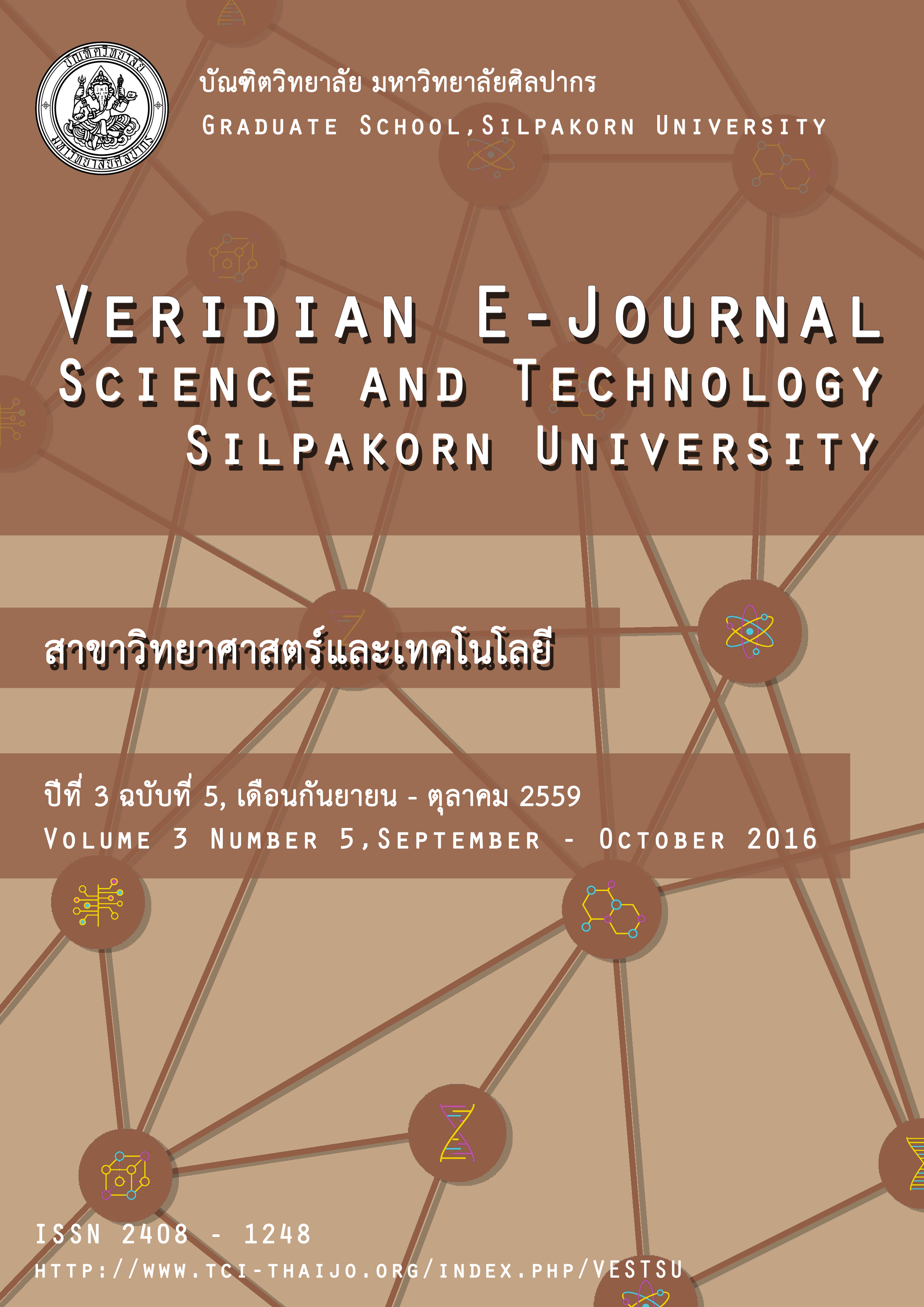การประเมินความสามารถในการต้านออกซิเดชันด้วยระบบวิเคราะห์การไหลอัตโนมัติร่วมกับ ส่วนตรวจวัด พีอีดีดีแบบประหยัด
Main Article Content
Abstract
งานวิจัยนี้ได้พัฒนาระบบการไหลอัตโนมัติ (Flow injection analysis) ร่วมกับส่วนตรวจวัดสีที่ประดิษฐ์ขึ้นเองโดยอาศัยหลักการของ Pair Emitter Detector Diode (PEDD) ระบบที่พัฒนาขึ้นนำไปใช้ในการประเมินความสามารถในการต้านออกซิเดชันโดยรวมด้วยวิธี ABTS โดยใช้กรดแอสคอร์บิคเป็นสารมาตรฐานและรายงานเป็นค่า ascorbic acid equivalent (AAE) การศึกษาประกอบด้วยการเลือกหลอดแอลอีดีที่ทำหน้าที่ให้แสงและรับแสง รวมถึงศึกษาปัจจัยต่างๆ ที่ส่งผลต่อระบบการวิเคราะห์เพื่อหาสภาวะที่เหมาะสม พบว่าระบบการวิเคราะห์นี้ให้ความเป็นเส้นตรงที่ดี (R2 เท่ากับ 0.9980) ในช่วงความเข้มข้น10–50 µM โดยมีสมการเส้นตรง y = (8.607±0.222) - (14.92±7.35) อีกทั้งยังให้ความแม่นยำเป็นที่น่าพอใจ (%RSD = 2.41) และสามารถวิเคราะห์ตัวอย่างได้อย่างรวดเร็ว คือ 48 ตัวอย่างต่อชั่วโมง ค่าความเข้มข้นต่ำสุดที่วิเคราะห์ได้ (3s/n) คือ 1.98 µM เมื่อนำระบบที่ได้พัฒนาขึ้นนี้ไปวิเคราะห์น้ำผลไม้ที่มีจำหน่ายตามท้องตลาดเปรียบเทียบกับวิธี ABTS ดั้งเดิม พบว่าค่า AAE ที่วิเคราะห์ได้จากทั้งสองวิธีไม่มีความแตกต่างกันอย่างมีนัยสำคัญที่ระดับความเชื่อมั่น 95% โดย tstat(1.45) < tcritical(2.57)
In this work, a flow injection analysis (FIA) system with an in-house colorimeter, based on Pair Emitter Detector Diode (PEDD), was developed. The FIA-PEDD system was applied to evaluate the total antioxidant capacity (TAC) by means of 2,2'-azino-bis (3-ethylbenzothiazoline-6-sulfonic acid) (ABTS) assay.Ascorbic acid was employed as a standard antioxidant and TAC was then reported as ascorbic acid equivalent (AAE). Selection of light emitter and light detector for PEDD was investigated. Some parameters affected the flow performance were also optimized. The FIA-PEDD system showed good linearity (R2 = 0.9980) in the concentration range of 10-50 µM with linear equation: y = (8.607±0.222) - (14.92±7.35). The method provided satisfactory precision (%RSD = 2.41) and rapid throughput of 48 samples per hour. Limit of detection (3s/n) was 1.98 µM. The developed system was applied to analyze commercial fruit juice, purchased from supermarkets. AAE value of juice samples, obtained from our method were validated with those from the classical ABTS assay. The results revealed that they were in good agreement with tstat(1.45) < tcritical(2.57) at 95% confident level.

